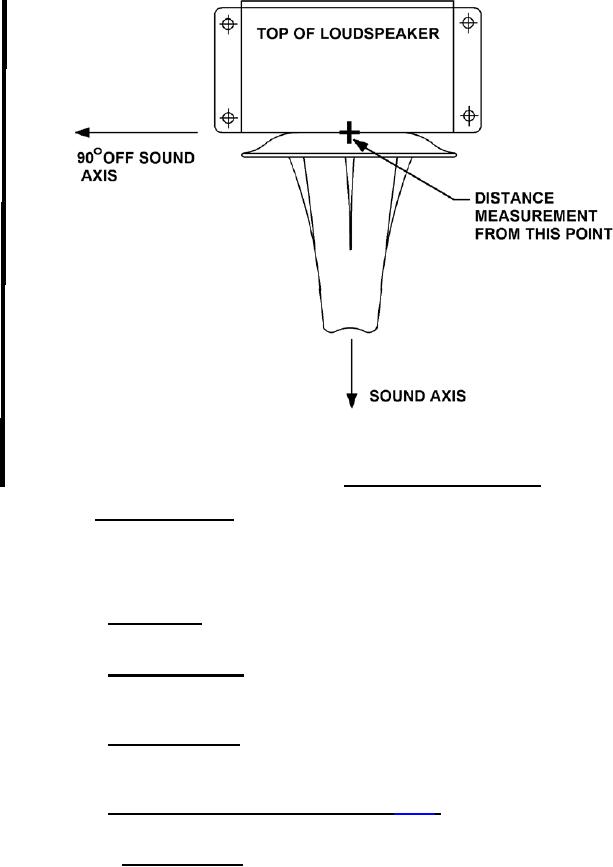
MIL-DTL-16225C
FIGURE 2. Orientation in acoustical tests.
3.8 Operating conditions. The loudspeaker unit shall be designed for intermittent or continuous
operation, without damage, under the adverse conditions normally encountered in installations exposed
to the weather aboard naval combatant ships, and shall be capable of normal operation after prolonged
periods of storage and transportation from one location to another. Such operation shall be predicated on
satisfactory performance, within the limits permitted herein and under the following specified conditions.
3.8.1 Submergence. There shall be no degradation of the acoustical characteristics after the
loudspeaker has been subjected to the submergence tests of 4.4.8.
3.8.2 Temperature cycling. The loudspeaker shall not be damaged nor the operational performance
degraded, when restored to the operating temperature range after being exposed for long periods in the
non-operating temperature range of 62 degrees C to + 70 degrees C. (see 4.4.10).
3.8.3 Shock and vibration. The loudspeaker shall be designed to withstand the mechanical shocks and
vibrations normally encountered aboard ship. The loudspeaker shall successfully withstand the tests of
3.8.4 Service blastproof and gun blastproof (see 4.4.11). The loudspeaker shall be service blastproof
and gun blastproof, under the following specified conditions .
3.8.4.1 Service blastproof. The loudspeaker shall be capable of being exposed, and shall not be
damaged during the exposure to 10 (ten) service charge blasts of a 5-inch, 25 or 380-caliber gun. The
unit shall be elevated at least 6 feet above the ground and located 21.5 feet (for the 25-caliber gun) or 25
feet (for the 38-caliber gun), from the gun muzzle in the plane through the muzzle perpendicular to the
gun axis, and shall be oriented to face the gun muzzle.
7
For Parts Inquires call Parts Hangar, Inc (727) 493-0744
© Copyright 2015 Integrated Publishing, Inc.
A Service Disabled Veteran Owned Small Business